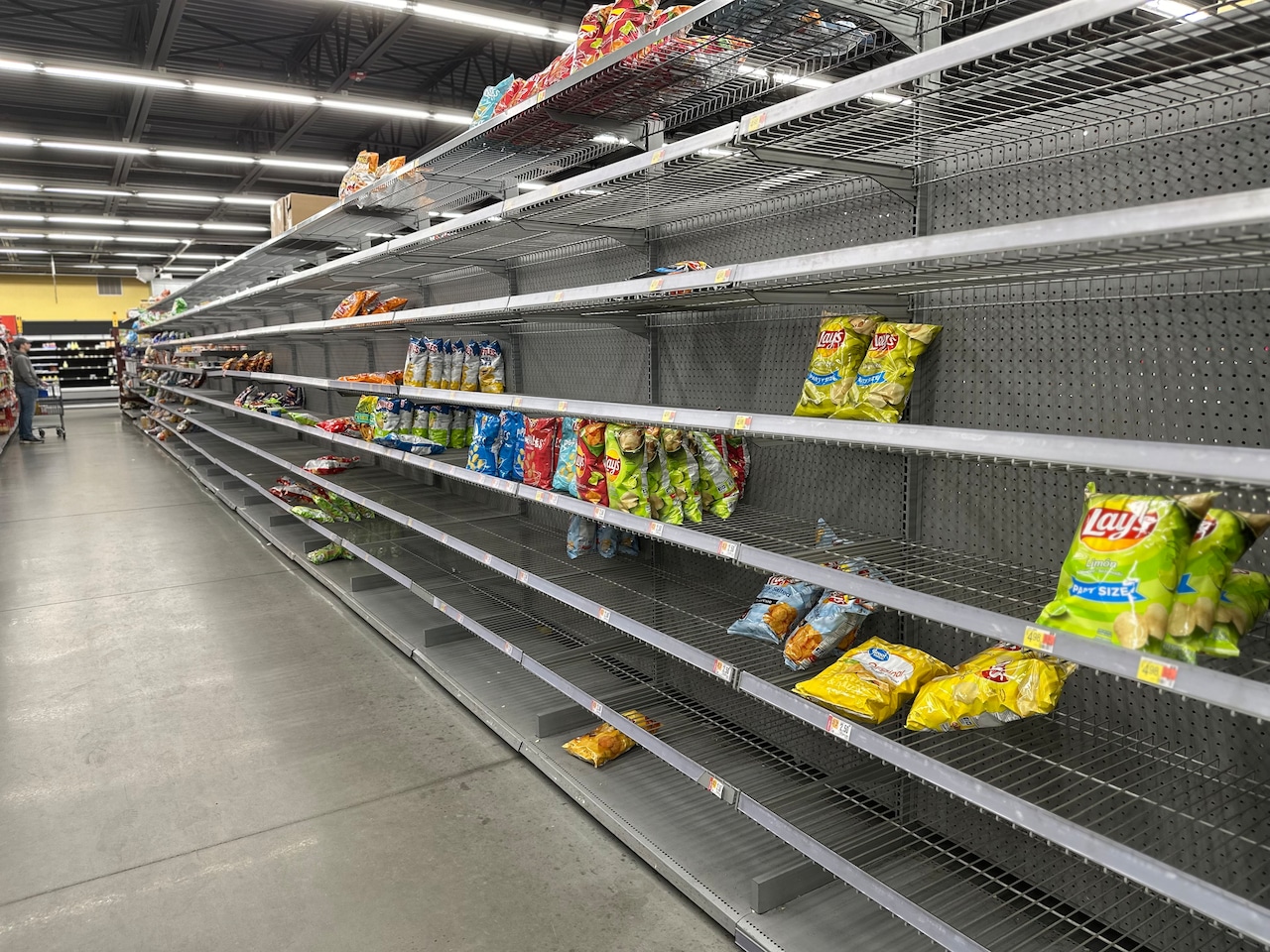Higher Prices, Empty Shelves: The Lingering Impact Of Trump's Trade War With China

Table of Contents
Increased Consumer Prices: A Direct Result of Tariffs
Trump's trade war with China, active primarily between 2018 and 2020, involved the imposition of significant tariffs on hundreds of billions of dollars worth of Chinese goods. These tariffs, essentially import duties, directly increased the cost of these products for American consumers. The simple economics are clear: higher tariffs mean higher prices at the checkout.
- Examples: Electronics, furniture, clothing, and numerous other consumer goods saw price increases as a direct result of these tariffs. Many everyday items became noticeably more expensive.
- Data: Studies have shown price increases ranging from 10% to 25% or more on specific goods affected by the tariffs, depending on the product and the level of tariff imposed. For example, certain types of furniture saw price increases exceeding 20%.
- Impact on Income: Low- and middle-income families were disproportionately affected, as these increased costs represented a larger percentage of their disposable income. The rise in the cost of living placed a significant strain on many households.
- Inflationary Pressure: The widespread increase in prices contributed significantly to inflationary pressures in the US economy, eroding purchasing power and impacting overall economic growth. This increase in consumer prices fuelled broader inflation concerns.
Disrupted Supply Chains: A Long-Term Consequence
The trade war's impact extended far beyond simple price increases. It created significant disruptions to global supply chains, creating bottlenecks and delays that continue to ripple through the economy. The imposition of tariffs and retaliatory measures complicated international trade significantly.
- Business Impacts: Businesses faced significant challenges in sourcing goods and materials, leading to delays in production and delivery. Many companies struggled to find alternative suppliers outside of China, leading to increased costs and reduced competitiveness.
- Examples: Numerous companies experienced production delays due to trade restrictions, impacting everything from manufacturing to retail. Some sectors experienced shortages of critical components, halting production lines.
- Trade Restrictions: The tariffs and trade restrictions imposed created significant bottlenecks, disrupting established supply chains and forcing businesses to adapt rapidly and often at increased cost. This unpredictability hampered long-term planning.
- Shift in Sourcing: In response to disruptions, some companies attempted to diversify their sourcing strategies, shifting production to other countries, a process that often proved costly and time-consuming. This shift in sourcing strategies itself created its own set of challenges and added to overall costs.
The Impact on American Businesses and Workers
Trump's trade war with China didn't just affect consumers; it profoundly impacted American businesses and their workers. While some argued the tariffs were designed to protect American industries, the reality proved far more complex.
- Import & Export Impacts: Businesses that imported goods from China faced increased costs and reduced competitiveness. Businesses that exported to China faced retaliatory tariffs, making their products less attractive in the Chinese market.
- Job Losses: While precise figures are debated, studies suggest job losses in specific industries linked to the trade war, stemming from decreased demand, business closures, and factory relocation.
- Business Closures: Some businesses were unable to withstand the increased costs and reduced competitiveness, resulting in closures and job losses. The unpredictability of the trade environment made planning incredibly difficult.
- Impact on SMEs: Small and medium-sized enterprises (SMEs) were particularly vulnerable, often lacking the resources and flexibility to adapt to the rapidly changing trade landscape.
Long-Term Economic Fallout and Recovery Efforts
Even after some tariffs were removed, the economic consequences of Trump's trade war with China linger. The damage to supply chains, the increased costs for consumers, and the uncertainty created continue to pose challenges.
- Lingering Inflation: The inflationary pressures fueled by the trade war continue to impact the economy, leading to ongoing concerns about the cost of living.
- Reshoring Difficulties: The effort to reshore manufacturing back to the US faces significant hurdles, including higher labor costs and the need for substantial investments in infrastructure.
- Government Policies: The US government has implemented some policies aimed at mitigating the negative impacts of the trade war, including efforts to diversify supply chains and support domestic manufacturing. However, the long-term effectiveness of these policies remains to be seen.
Conclusion: Understanding the Lasting Legacy of Trump's Trade War with China
Trump's trade war with China had a profound and lasting impact on the American economy. The resulting higher consumer prices and disrupted supply chains continue to affect consumers and businesses. The significant economic consequences, including job losses, business closures, and increased inflationary pressure, underscore the complexity of international trade policy. Learn more about the lasting impacts of Trump's trade war with China and its implications for the future of global trade. Understanding these complexities is crucial for informed decision-making and for building a more resilient and adaptable economy. Further research into the economic studies conducted on this topic can provide a more comprehensive understanding of the long-term consequences.

Featured Posts
-
 Sukces Porsche 911 W Polsce Model Za 1 33 Mln Zl Hitem Sprzedazy
Apr 29, 2025
Sukces Porsche 911 W Polsce Model Za 1 33 Mln Zl Hitem Sprzedazy
Apr 29, 2025 -
 Chinas Huawei Develops Exclusive Ai Chip To Rival Nvidia
Apr 29, 2025
Chinas Huawei Develops Exclusive Ai Chip To Rival Nvidia
Apr 29, 2025 -
 Long Lasting Power A Review Of Kuxius Solid State Power Bank
Apr 29, 2025
Long Lasting Power A Review Of Kuxius Solid State Power Bank
Apr 29, 2025 -
 British Paralympian Missing In Las Vegas Search Intensifies After Week Without Contact
Apr 29, 2025
British Paralympian Missing In Las Vegas Search Intensifies After Week Without Contact
Apr 29, 2025 -
 New Information Surfaces Regarding Helicopter Plane Incident Near Reagan Airport
Apr 29, 2025
New Information Surfaces Regarding Helicopter Plane Incident Near Reagan Airport
Apr 29, 2025
